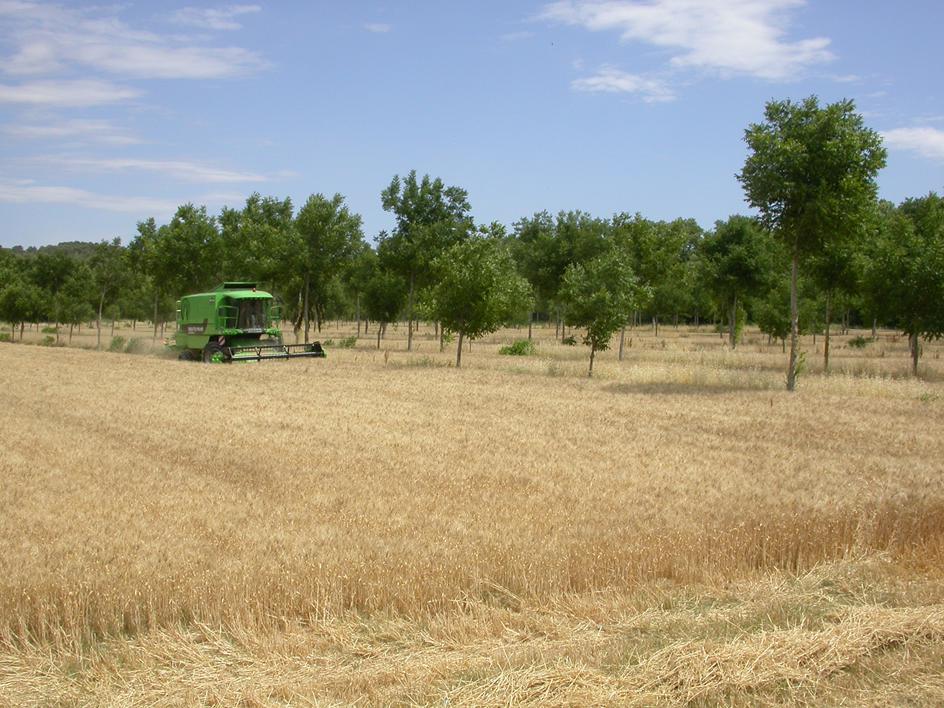
Sistemas silvoaráveis mediterrânicos em França
Descrição do sistema
A alta sazonalidade das chuvas nas áreas mediterrânicas do sul da França limita os rendimentos arvenses. Há períodos de elevada precipitação no Outono e períodos de escassez de água na primavera e verão. Nesta situação, em zonas onde existem solos profundos que são capazes de reter água, os sistemas silvoaráveis (linhas de árvore dentro dos campos de cultivo) podem melhorar a infiltração de água, limitar a evaporação de água do solo e limitar as necessidades de água das culturas.
Reunião de stakeholders inicial
Se você gostaria de saber mais sobre a actividade deste grupo, entre em contato com a Dr Marie Gosme (marie.gosme@supagro.inra.fr) do INRA.
Download the initial stakeholder report
An initial report was produced in October 2014.
Download the initial research and development protocol
This stakeholder group has produced two protocols: the first is focused on the selection of durum wheat varieties for agroforestry and the second is focused on weed management in silvoarable systems.
Download the system descriptions
Two system description reports providing an update on the selection of durum wheat varieties and weed management were produced in January 2016.
Lessons learnt
In the first report, Marie Gosme and Dominique Desclaux describe the lessons learnt from screening durum wheat cultivars for their suitability in agroforestry systems in Mediterranean France. Up to 45 cultivars were compared in control and agroforestry conditions in up to three sites for up to three seasons. Crops under agroforestry conditions received between 40 and 75% of the light available in unshaded areas. Mean yields were low in 2015, were about 1.9 t/ha in 2016 and 2.7 t/ha in 2017. The cultivars showed large variability in their suitability for agroforestry conditions with yield differences in agroforestry compared to full sun conditions ranging from -62% to +77 %. Old varieties and varieties based on populations were not systematically more adapted to agroforestry than newer or pure-line cultivars.
In the second report, Delphine Mézière and colleagues at INRA in Southern France measured the effect of the tree-rows within silvoarable systems on the species and abundance of weeds, relative to open field conditions, over 2015 and 2016. Herbicide use was limited to a single post-winter spray. In the barley crop in 2015, on average about seven weed species/m² were found in the arable section of the agroforestry plot, compared to six species/m² in the open arable field. The number of weed individuals was lower in the agroforestry arable crop (about 50/m2) than in the open field (about 75/m2). With a pea crop in 2016 there was some evidence that the weed abundance in the crop was higher in the crop margin (next to the tree row) than in the centre of the arable alley.